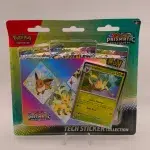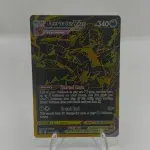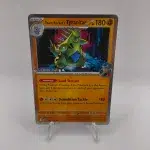The Complete Guide to Graded Pokémon Cards
A resource for collectors, players, and investors
Graded Pokémon cards are one of the fastest-growing areas of the TCG market. They offer authentication, condition verification, and long-term protection — making them a favourite for serious collectors and investors alike.
Whether you’re completely new to grading or looking to refine your collection, this guide will walk you through what graded cards are, how the grading process works, and the best way to start building your own slabbed collection.
1. What Does “Graded” Mean?
A graded Pokémon card has been:
- Authenticated as genuine
- Examined for condition
- Assigned a numerical grade (typically on a 1–10 scale)
- Encased in a tamper-proof plastic slab
Professional grading companies assess centring, corners, edges, and surface quality before issuing the grade.
2. The Main Grading Companies
- PSA (Professional Sports Authenticator) — Industry leader, uses a 10-point grading scale with “Gem Mint 10” as the highest standard.
- Beckett Grading Services (BGS) — Known for sub-grades (centering, edges, corners, surface) and the coveted “Black Label” 10.
- Certified Guaranty Company (CGC) — Popular for competitive pricing and fast turnaround, uses a 10-point scale with half grades.
Each has different label styles, turnaround times, and fee structures.
3. Why Collect Graded Cards?
- Authenticity — Third-party verified, reducing risk of fakes.
- Condition Lock-In — The slab preserves the grade and protects from wear.
- Display Appeal — Slabs look professional and protect cards from handling damage.
- Resale Value — High grades (PSA 9/10, BGS 9.5/10) often command premium prices.
⚠ Prices can rise and fall — grading is not a guaranteed investment.
4. Understanding the Grading Scale
While each company has its own nuances, the general 10-point scale is:
- 10 – Gem Mint / Pristine (virtually flawless)
- 9 – Mint (minor flaws only visible under magnification)
- 8 – Near Mint-Mint (slight wear visible)
- 7 and below – Increasingly visible defects or play wear
BGS and CGC use half-point grades for more precision.
5. How to Send Cards for Grading
- Choose your grader — Consider cost, turnaround time, and resale goals.
- Prepare your cards — Use clean sleeves and card savers; avoid fingerprints.
- Fill out submission forms — Each company’s website has its own process.
- Package securely — Prevent shifting or bending during transit.
- Insure your shipment — Especially for high-value cards.
6. What to Grade (and What Not to)
Good candidates for grading include:
- Rare holo/alt-art cards in excellent condition
- First-edition or vintage cards
- Popular chase cards from modern sets
Avoid grading:
- Cards with heavy play wear
- Common cards with little resale value
7. Buying Graded Cards
If you prefer to skip the grading process, you can buy pre-graded slabs:
- Look for strong grades from reputable graders
- Verify certification numbers on the grader’s official site
- Check for signs of resealed or counterfeit slabs
➡ Browse our curated graded Pokémon cards selection.
8. Storage & Display Tips
Even though slabs are protective, store them:
- Upright in a cool, dry place
- Away from direct sunlight
- In a locked display case if possible
Final Word
Graded Pokémon cards combine the thrill of collecting with the reassurance of professional authentication. Whether you’re after nostalgia, investment potential, or simply the best way to display your favourite pulls, slabs offer both security and style.




